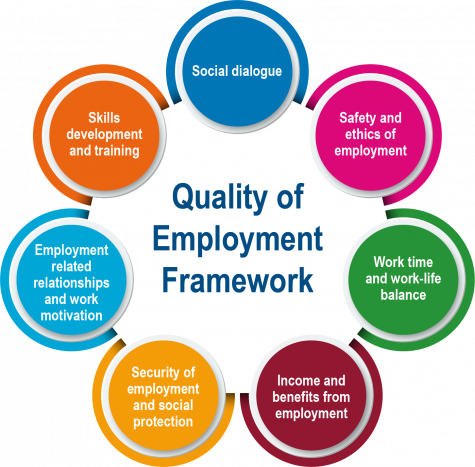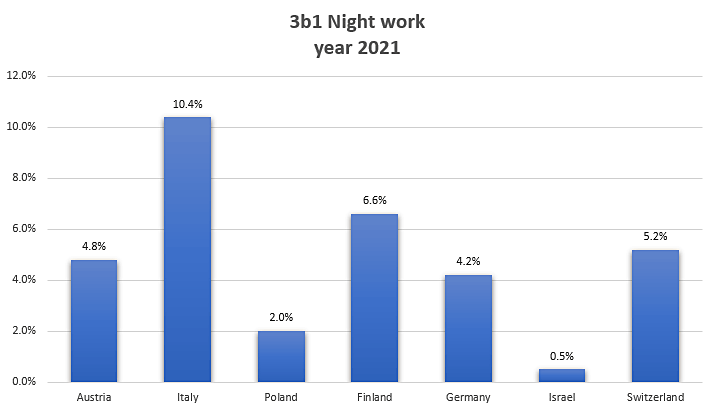|
In 2015, the Conference of European Statisticians endorsed a statistical framework, developed by the Expert Group on Measuring Quality of Employment and published in the Handbook on Measuring Quality of Employment. It provides a theoretical framework and detailed practical guidance for countries that wish to produce statistics on measuring quality of employment.The framework represents a neutral and comprehensive approach to assess quality of employment in its multiple facets. It defines 67 indicators on seven dimensions (which are partly divided into sub-dimensions) that address employment quality from the perspective of the employed person. |
|
 To view the subdimensions and specific indicators under each, please click on the dimensions below.
International comparison of resultsSome countries have already implemented statistics on the quality of employment. The below table illustrates an example of internationally comparable results that are compiled by several countries for indicators 3a5 and 3b1 under Dimension 3: Working time and work-life balance. 3a5 Multiple job holdersThis indicator describes the share of employed persons who have more than one job (as employee or self-employed) in all employed persons aged 15+ years. The recommended source to use is a household-based Labour Force Survey (LFS). Methodological information on the indicator results can been seen here.  To work in more than in one job may indicate that the earnings of one job are not enough to make the ends meet (especially in case the main job is part-time and/or in certain ISCO-groups with lower socio-economic status). On the other hand, to have another job may be associated to an occupation of high socio-economic status, e.g., in the case of professional consultation work done beside the main job. If possible, on the basis of national surveys, it is recommended to report the reasons for having multiple jobs. 3b1 Night workThis indicator describes the share of employed persons who usually work at night in all employed persons aged 15+ years. The definitions of “night” vary considerably among countries, so that it is not easy to establish a strictly common basis for all. As defined for the EU-LFS, night work must be considered as work done during the usual sleeping hours. As foreseen by directive 2003/88/EC, the definition of usual sleeping hours can vary by country but, in any case, it should include hours between midnight and 5 a.m. Methodological information on the indicator results can been seen here.  Night work can have significant impact on the health of the workforce, disturbing effects on the body’s circadian rhythms, on sleep cycles and also inducing sleep deprivation. This can cause psychological and emotional problems, including depression, stress and nervousness. In addition, night work has negative effects on family and social relationships. Night work can have a negative impact upon the work-life balance and can adversely affect physical as well as mental well-being.
National and international examples of publications on "Quality of Employment"Using the UNECE framework, Eurostat has compiled data on employment quality for the EU countries that is provided in the Eurostat database. For more information, please visit the Eurostat website. The list below provides examples of how quality of employment statistics are being published in different countries.
For more information on Quality of Employment, please contact [email protected]. |